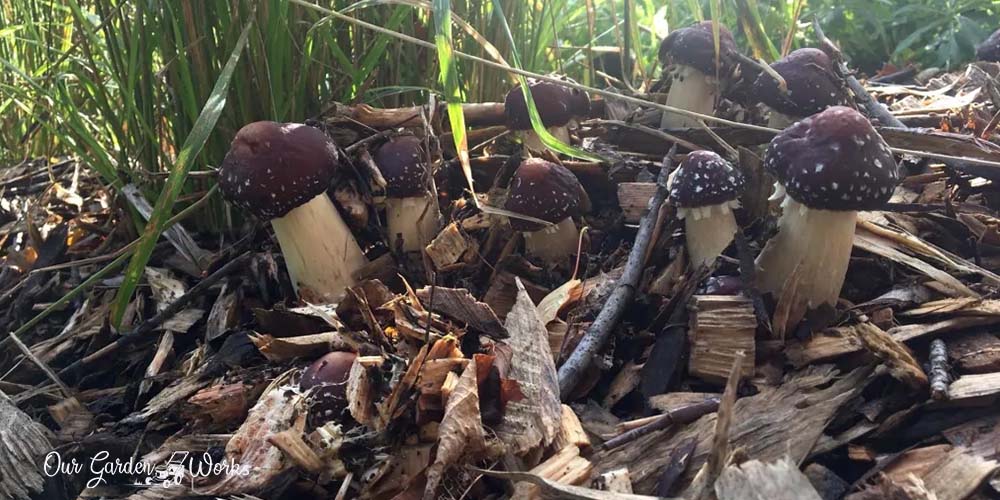The presence of mushrooms in your mulch can mean two things. You have healthy soil, and the mulch provides a humid environment that makes mushrooms thrive in them. Learning how to get rid of mushrooms in mulch is a good choice if you want to remove an eyesore on your landscape.
However, the mushrooms in your garden might help your plants grow or make for a delicious addition to your meals.
(You could use the table of contents below to jump to the sections that are most important to you.)
What Are Mushrooms?
Mushrooms have a lot of uses ranging from edible culinary ingredients to being poisonous material.
Having mushrooms in your garden may make you want to get rid of them immediately. But before you do that, mushrooms can actually help your plants grow, so it’s best to learn more about them first.
Mushroom is a fleshy fruit-bearing fungus that produces a lot of spores. They can grow in the soil, mulch, or above the ground.
As a fungus, they have a different way of getting nutrients from their food source. The mycelium covers the food source and extracts enzymes that break down the nutrients externally. Then, the broken-down nutrients will then be absorbed again by the mycelium.
Why Do Mushrooms Grow in Mulch?
Unlike plants, mushrooms feed on nonliving and decaying matter. Since mulch consists of organic materials that decompose naturally on the soil, it becomes a good food source for mushrooms.
The following mulches make the best food source for mushrooms due to their acidic nature and dense nutrients:
- Pine barks
- Cedar mulch
- Dried leaves
- Peat moss
- Straw
- Hay
- Sawdust
- Wood chips
- Grass clippings
Mulch also provides a humid environment which mushrooms love. The shade provided by the plants is also another ideal feature that makes mulch a good breeding ground for mushrooms.
The mushrooms that grow in mulch can either be edible or poisonous. If you have kids and pets that roam around the house, you might want to check into the types of mushrooms that grow in mulch.
Common Mushrooms That Grow in Mulch
Before you plan on getting rid of mushrooms in the mulch of your plant bed, it’s best to check if they are edible. Here are the types of mushrooms that gardeners usually find in mulch:
Edible Mushrooms
If you’re lucky, the mushroom spores that land in your mulch might be edible. One indication that a mushroom is edible is when it doesn’t rapidly excrete a bluish or greenish residue when cut.
You may also recognize them by their look, so we listed them below for your reference:
(1) Oyster mushrooms (Pleurotus ostreatus): This type of mushroom is often found in woody areas. If you use wood barks as a mulch, oyster mushrooms may thrive in them. Its distinct features are its broad but thin fan-shaped cap with gild lining in the underside.
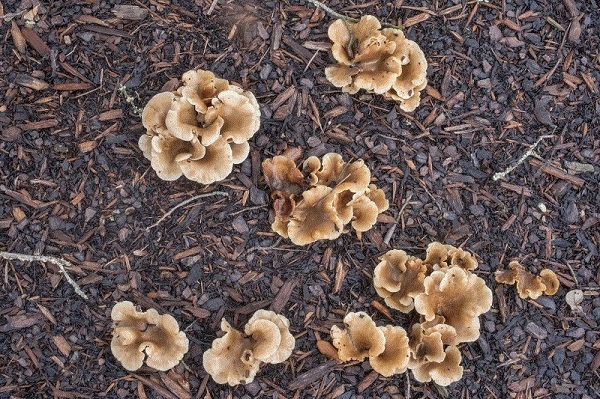
Oyster mushroom has a carnivorous trait since it feeds on nematodes in the soil. So, if you have nematode problems in your garden, having this mushroom on your mulch will work to your advantage. On the other hand, it is also edible and tastes better when harvested young.
(2) Bay bolete: This type of mushroom has the iconic shape and look of a mushroom with a puffy cap and a thick stem. It has yellow and large pores under its cap and a pale brown stem. It thrives in woodland areas which makes wood chips and bark chips in your garden a susceptible breeding ground.
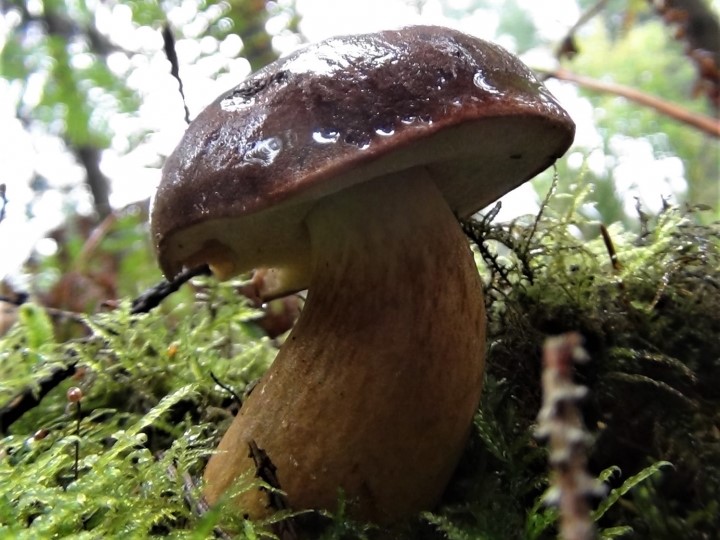
Bay bolete is edible and has been a delectable addition to meals. The pores are removed and taste best when dried. Gardeners love this type of edible mushroom because it does not host maggots.
(3) Black trumpet (Craterellus cornucopioides): This type of mushroom has a unique shape that looks like a trumpet. It grows at a maximum of 6 inches in moist moss, decomposing oak woods, or near a living oak wood. It has a great taste that resembles a black truffle, especially when dried. In some cuisines, it is crushed into a powder form as a good addition to several kinds of dishes.
If you are using peat moss in your garden, you may likely encounter a black trumpet. It is known in several names, such as the horn of plenty, black chanterelle, trompette de la mort in French cuisine, trombetta dei morti in Italian, or trumpet of the dead, djon djon.
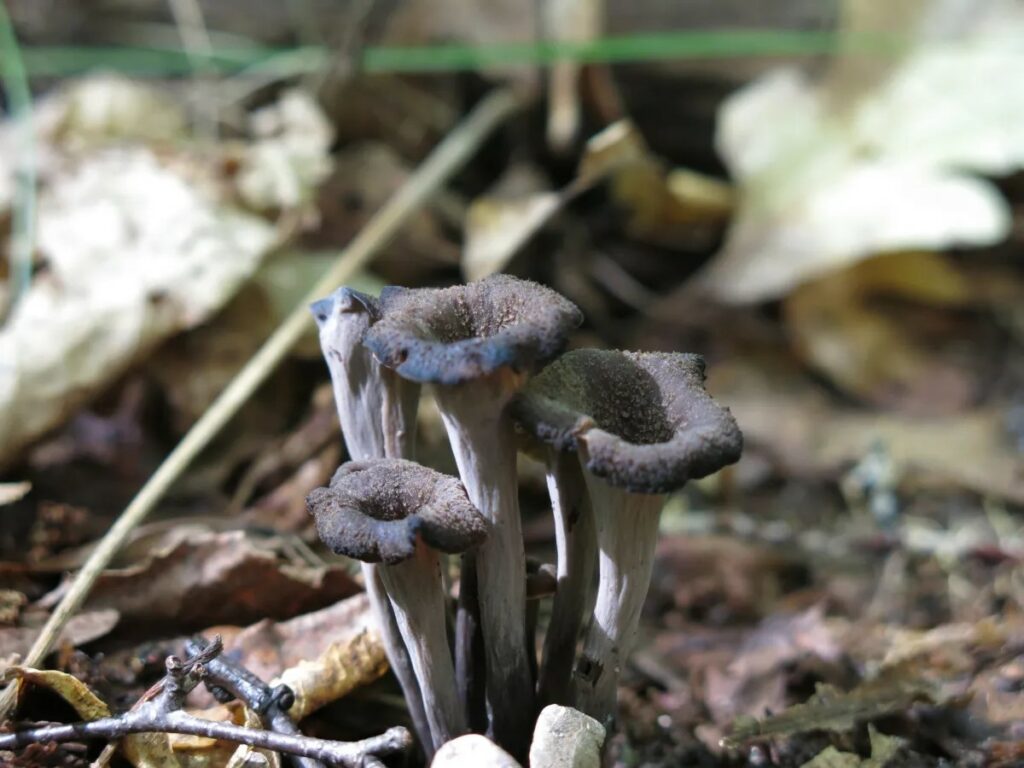
(4) Portobello mushroom: This type of mushroom is probably among the most popular edible mushrooms in Asian and American cuisine. Its big cap is a flexible ingredient that you can use to hold some food or add a distinct flavor to soups. It has two colors which are white and brown.
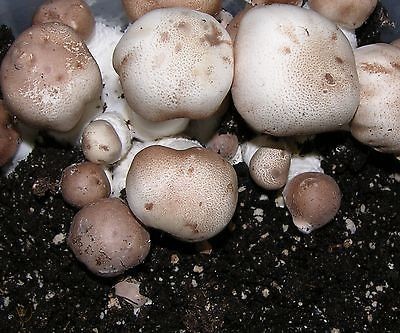
Portobello mushrooms can grow in the compost on top of your soil. They may also thrive in moist peat moss.
(5) Gourmet mushrooms: Several types of gourmet mushrooms may grow in your yard. They are all edible and cost a lot if you sell them in the market. These mushrooms may grow in pine needles, moist moss, and mulch made of wood chips.
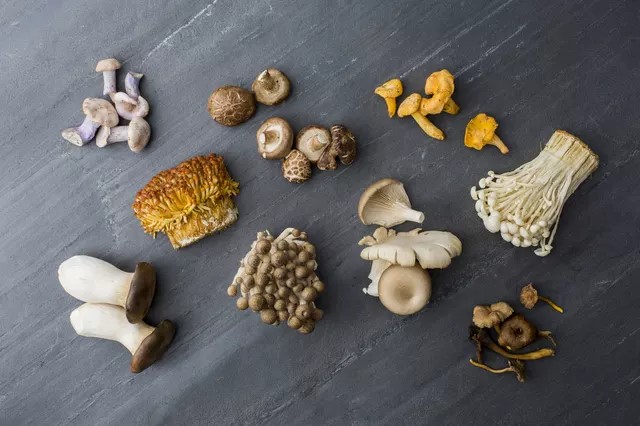
If you find the following mushrooms in your garden, you may want to make sure to set them aside and eat them or sell them to your local gourmet restaurants in your area.
Poisonous Mushrooms
Since mushrooms are the reproductive part of a fungus, some of them can sprout anywhere where mulch is available in your garden.
Some of them are poisonous and may put your pets at risk. These are the mushrooms that you may want to get rid of as soon as possible:
(1) Amanita phalloides (death cap or death cup): It is probably one of the most poisonous mushrooms that can kill a human by eating half of it. It contains amatoxins that attack the liver and kidneys. Its distinctive features are its smooth yellow-green to an olive-brown cap, white gills, and a skirt on its stem. It also has a cup-like feature on the base of its stem.
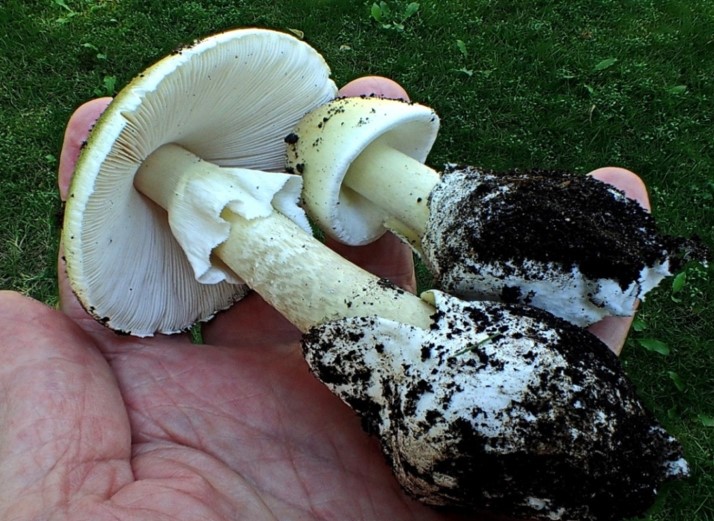
(2) Web caps, deadly webcap, or Cortinarius rubellus: This is a deadly type of mushroom common in North America. It is often mistaken as the Chanterelle mushroom due to its orange-brownish cap.
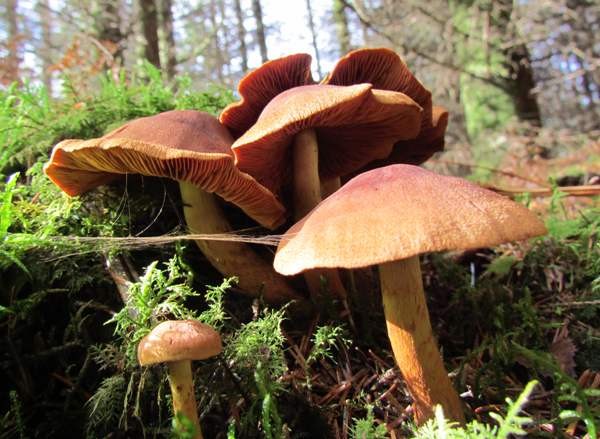
When ingested, it can cause flu-like symptoms that usually show up after two to three days. The symptoms will lead to kidney failure which causes death.
(3) Ink Caps (Coprinopsis atramentaria): This type of mushroom is edible but can be poisonous when consumed with alcohol. When young, its cap forms a bell shape that becomes flat as it grows.
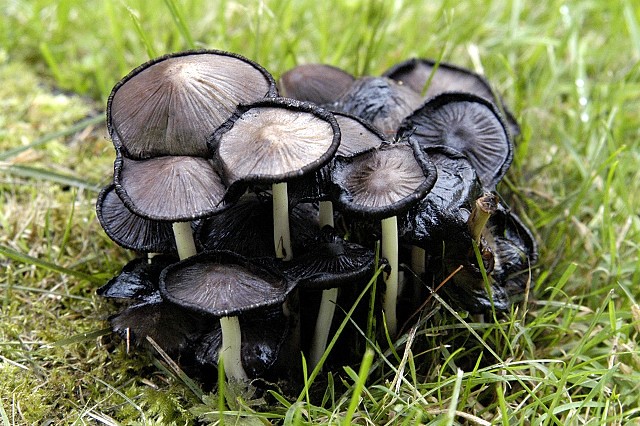
They are more widespread than other types of mushrooms and can grow in tufts of grass clippings in urban locations. Its distinctive feature is that it produces ink that has been used in other countries for publishing papers.
(4) Puffball mushrooms: It is a type of mushroom that has a puffy feature where its name is derived. Its cap grows like a softball with a bread-like interior. It is edible in its younger phase but becomes poisonous as it matures due to the formation of spores inside the cap.
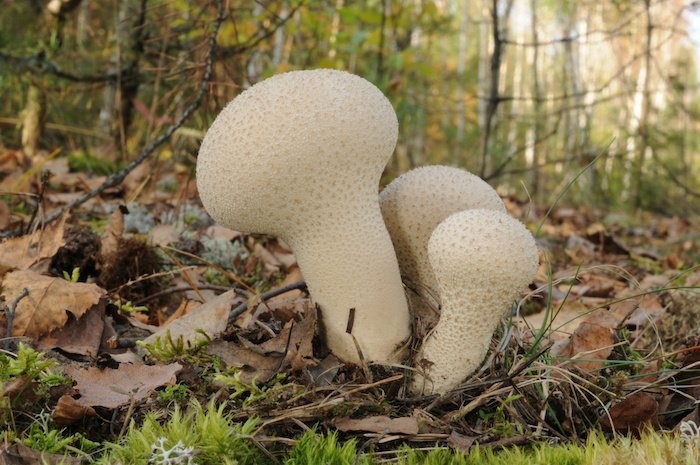
You’ll know that it’s no longer edible when its cap becomes mushy. A fun fact about this mushroom is it can grow to the size of a human head.
How To Get Rid of Mushrooms in Mulch
Now that you have a brief idea of what mushrooms to keep or get rid of, it’s now time to tidy up your lawn from these small invaders. Gardeners often get frustrated about them since some mushrooms are tough to control.
Like pests and weeds, removing mushrooms in your lawn can be a tedious task. They spread microscopic spores that can get to anything around your garden.
So, you may want to practice disease control practices to contain their spores and prevent them from sprouting everywhere.
Method 1: Fungicides
Since mushrooms are the reproductive parts of the fungus, it’s only natural to use fungicides to control them. The decaying mulch in your lawn is not only good for your plants but also attracts mushrooms.
Another tricky part when getting rid of mushrooms by hand is spreading the microscopic spores around your garden. So, in turn, you’re spreading more mushrooms in your yard.
Fungicides are best applied to your mulch after you hand-picked the mushrooms. It will not kill the mushrooms present in your yard but will present their growth in your garden. Fungicides will deal with the microscopic pores and prevent them from sprouting again.
The fungicides that you can use for mushroom control are as follows:
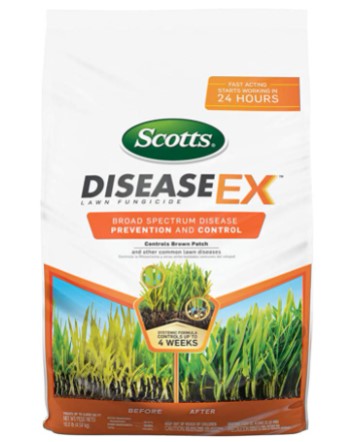
How to treat your lawn with a fungicide to control mushrooms
Here’s how you can use a fungicide to control the growing mushrooms colony in your garden:
Materials:
- Fungicide solution
- Gloves
- Mask
- Garbage plastic
- Shovel
- Fresh soil and mulch
Directions:
- Wear your safety equipment and dig the mushrooms along with the mulch and soil around them. The soil and mulch are already contaminated with microscopic, spores so you also need to remove them.
- Place the mushrooms and contaminated soil in the trash bag immediately and put them in the trash.
- Spray the fungicide solution on your gloves, shovel, and shoes to prevent spreading the spores.
- Lastly, soak the area with a fungicide solution. You may repeat treating the area for the next couple of days to make sure the pesky mushrooms will no longer come back.
- Fill the area with fresh soil and mulch.
Method 2: Acetic Acid
Some gardeners find success in using vinegar to kill mushrooms. However, to successfully kill mushrooms, you need to increase the alkalinity of the soil and opt for something that has a pH level of 1 or 1.2. Usually, kitchen vinegar contains around 5% of acetic acid, which is not enough to change the acidity in the soil or mulch.
Concentrated vinegar with 45% acetic acid content would be best for mushroom removal. They are often used for cleaning and weed-killers. Since the concentration of the acetic acid is strong, you must wear gloves, a mask, and goggles when handling the solution.
Here are some of the best ones in the market that you can try:
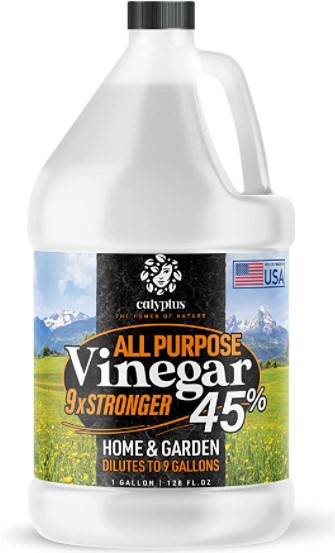
How to kill mushrooms with acetic acid
Due to the potency of the vinegar solution, make sure that you are handling it with proper safety equipment. Here’s how you can remove mushrooms in your garden using vinegar:
Materials:
- 4 parts of water
- Spray bottle
- 1 part concentrated vinegar solution
- Gloves
- Glasses
- Mask
Directions:
- Wear your safety equipment and place all the materials on a table in an outdoor setting.
- Mix water and vinegar in a spray bottle.
- Apply it solely on the mushroom and around the infected mulch. Avoid spraying it on plants and grass since it can kill them too.
Method 3: Baking Soda
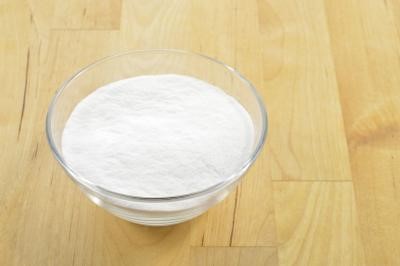
Baking soda is another quick fix for getting rid of mushrooms and their pores in your mulch. It helps make the mulch and soil more alkaline, which disrupts and prevents the development of mushrooms and the spread of their spores.
Most gardeners start using baking soda for mushroom removal since it is the most available and the cheapest option to use. It is also multi-purpose, so buying a box of baking soda can already check several things on your list. You can use it for cleaning, baking, and even gardening.
How to kill mushrooms with baking soda
Before you use baking soda in your garden, make sure that there are no plants or grass in the area. You need to place the baking soda solution in a spot-treatment method. Here’s how:
Materials:
- 2 tbsp. of baking soda
- 1 gallon of water
- Misting spray
Ingredients:
- Mix the baking soda and water in a separate container. Fill the misting spray with the solution.
- Spot treat the area where you often see the mushrooms.
- You may also cut the mushrooms and place them in a trash bag to ensure that the fungus will no longer spread its spores.
- 4. You may treat the area for three days to ensure the coverage of every spore produced by the mushroom.
Method 4: Nitrogen Fertilizers
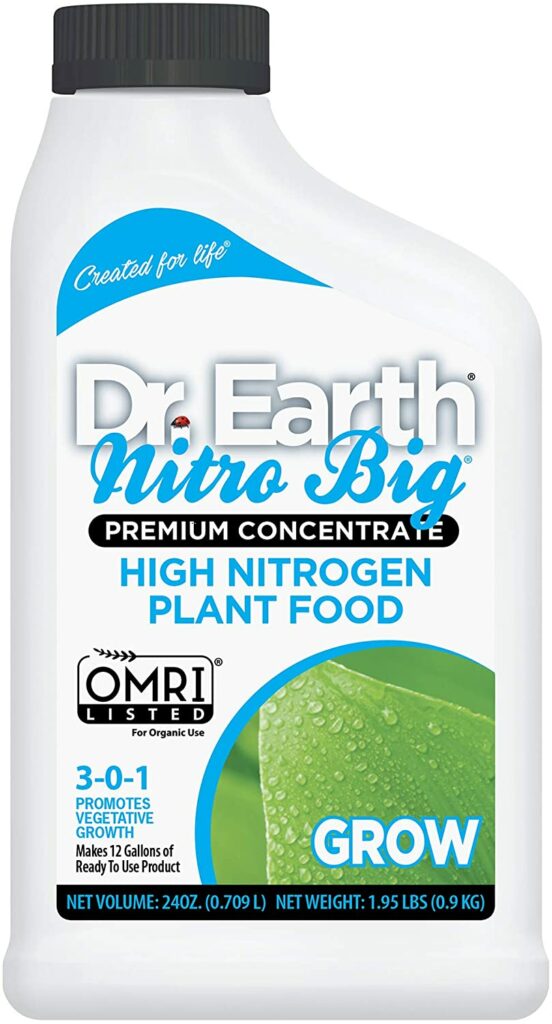
Nitrogen fertilizers are well-loved by plants but hated by mushrooms. Nitrogen speeds up the decomposition and breakdown of organic materials in the soil. It also encourages rapid plant growth which makes the roots steal the soil nutrients from the spores.
Instead of using a slow-release fertilizer, you may use simple nitrogen fertilizer or something with a nutrient ratio of 3-1-2 in your mushroom-infested mulch to help you hit two birds with one stone.
If you are covering a large area, you may need to apply nitrogen fertilizer once a year. Good nitrogen fertilizers to use in your mushroom-infested mulch are as follows:
- Dr. Earth Nitro Big High Nitrogen Plant Food
- Down to Earth Blood Meal Fertilizer
- Milorganite 0636 Organic Nitrogen Fertilizer
Method 5: Soapy Water
If you want to know how to get rid of mushrooms in mulch surrounded by your beloved plants, the answer lies in your homemade insecticide.
Soapy water is a popular homemade insecticide for getting rid of aphids and other common sap-sucking pests in plants. You may also use it to get rid of mushrooms without harming your plants. Here’s how:
Materials:
- Stick
- 2 tablespoons of dish soap
- 1 gallon of water
Directions:
- Mix the dish soap solution and water and place it in a small pitcher.
- Use a stick to poke some holes around the mushroom. Poke 3 to 4-inch holes in the soil.
- Pour the soapy water solution into the holes.
Method 6: Regular Yard Cleaning
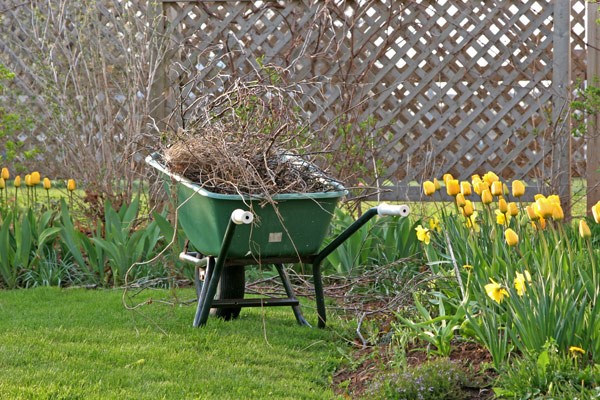
The fool-proof secret to a yard and mulch free of mushrooms is making sure that there’s less shade and decaying organic matter in your garden.
There should also be more air circulation that goes around your plant beds as well as well-drained soil. Here are some tips for a mushroom-free garden:
- Always remove dead branches and sweep up dried leaves.
- You should also ensure that there’s enough sunlight that goes into your garden to prevent making a breeding ground for spores.
- Always dethatch your lawn to remove tufts or a thick compilation of dead leaves and wood chips in your garden.
- Tilling your garden can also help increase the airflow in the soil and get rid of excess moisture in the soil and decomposing mulch.
Method 7: Change Your Watering Schedule or Improve Soil Drainage
Poor water drainage can cause several problems in your garden like root rot, fungal diseases, and mushroom growth.
If rainwater accumulates in your garden, you may place a french drain to prevent clogged soil. You may also add some soil conditioners, like perlite and less moisture-holding materials in the soil.
Final Thoughts
We hope that this post helped you solve your mushroom problems in your garden. Mushrooms may look unsightly but they are a good indication that you have nutrient-rich soil.
Let us know in the comments which method has eliminated the mushroom growth in your garden.
Also, please don’t forget to share this post with your friends to ease their frustrations in dealing with spore-producing mushrooms in their mulch.
